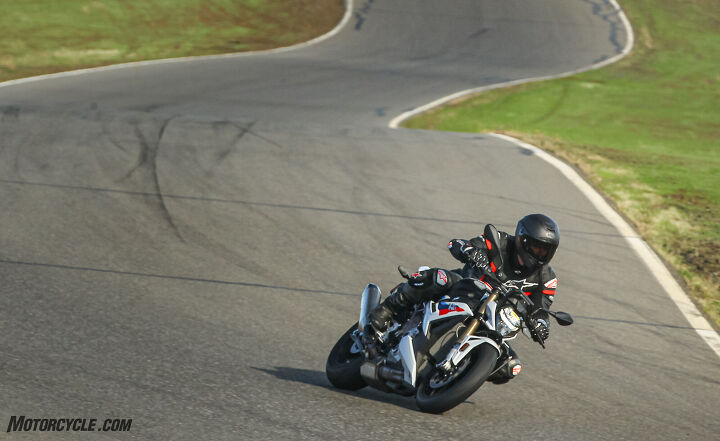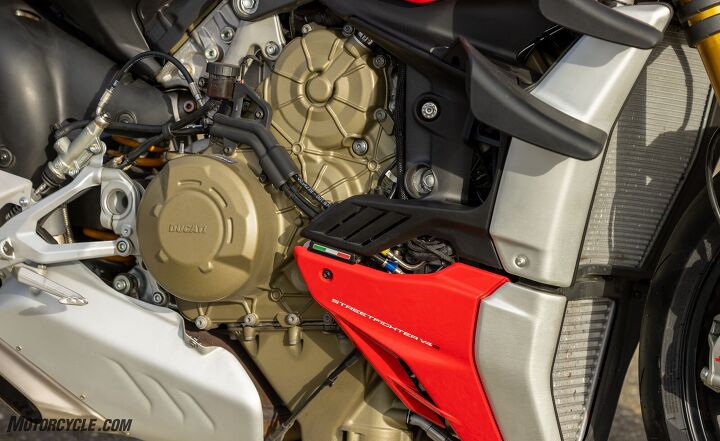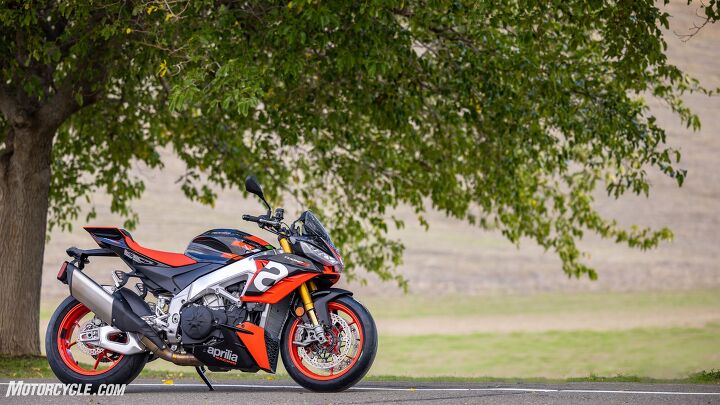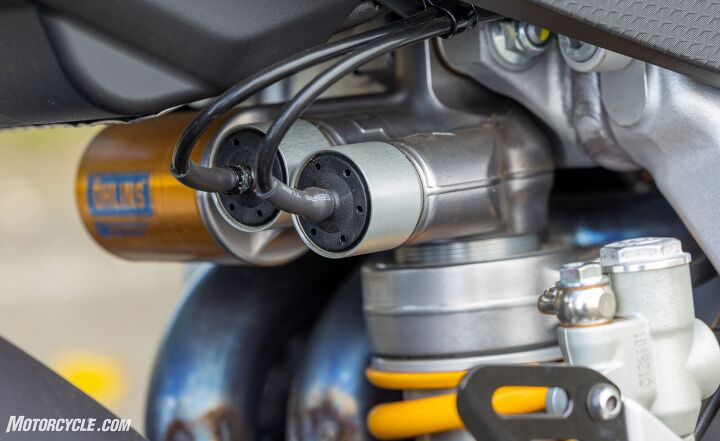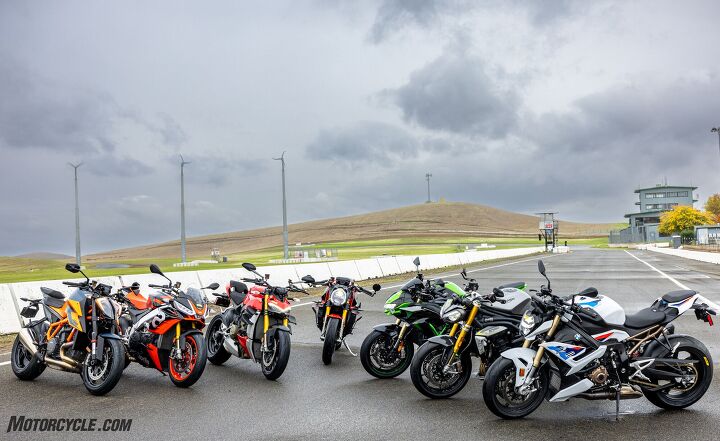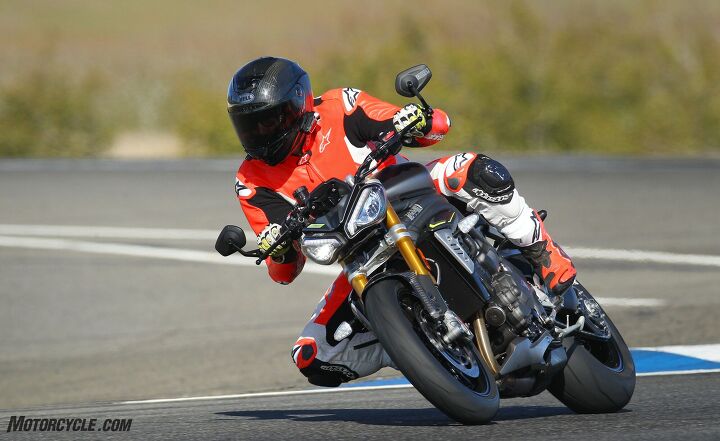Motorsports Racing News & Blog Articles
Battle Royale: 7-Way Heavyweight Naked Bike Shootout – Track
Twists. Turns. Suspense. Being the track portion of our mega 7-bike Heavyweight Naked Bike Shootout you’d think we’re talking about the sinuous nature of racetrack testing. No, sir. This is the plotline that would come to define this test! After conducting the street portion, some would say the outcome basically worked out as expected. Which would mean the track portion would follow suit, right? Well, as the late, great Nicky Hayden once said, “That’s why we line up on Sunday.”
If these tests were foregone conclusions, then we wouldn’t even bother showing up, and in our case, we would be lining up on a Monday and Tuesday. But that’s beside the point. What we have with the Aprilia Tuono V4 Factory, BMW S1000R, Ducati Streetfighter V4S, Kawasaki Z H2 SE, KTM 1290 Super Duke R, MV Agusta Brutale 1000RR, and Triumph Speed Triple 1200 RS are seven of the biggest dogs in the naked bike category. With more than 1100 horsepower on tap collectively, it’s only right to let these things stretch their legs on a track. Naturally, we were happy to oblige.
Battle Royale: 7-Way Heavyweight Naked Bike Shootout – Street
2021 Heavyweight Naked Bike Spec Shootout
The Test. And The Testers
Here’s the deal. Carter’s at the Track were awesome partners in allowing us to join them at Thunderhill Raceway in Northern California for not one, but two days of riding. Despite the seven-hour slog from our SoCal digs to T-Hill, the trek was worth it to experience what’s personally my favorite track in California. With a mixture of fast corners, tight hairpins, elevation change, and importantly two long straights, this is the place to go to let these dogs eat.

It’s a good day at the office when the least powerful bike in the group “only” has 146 hp. The Ducati, BMW, and even the Triumph proved to have nice over-rev, which is convenient in a track setting.
As it turns out, however, the weather gods had other plans in store for us as rain on the first day meant we’d have to jam two days of riding into one. Not ideal by any stretch, but when life throws you lemons…
To level the playing field from a rubber standpoint, Pirelli provided Supercorsa SC (not to be confused with the SP) tires measuring 120/70-17 front and 200/60-17 rear. Some readers might remember Pirelli’s Supercorsa TD, or Trackday, compound from a few years ago. These were specifically formulated to provide great grip without the need for tire warmers. Pirelli has since reshuffled its nomenclature and now what was once the TD tire is the SC2 front compound and SC3 rear compound we’re using for this test.

The Pirelli Supercorsa line of tires has consistently been an excellent performer for years. They continued to impress during the track portion of our testing.
Full disclosure: we did end up using tire warmers for this test. It wasn’t the plan, but chilly ambient temps in the morning, combined with a slightly damp track and a packed schedule meant we couldn’t waste any time waiting for the tires to warm up. Nor could we risk tossing a bike down the road on cold rubber.
As for the test itself, we followed our usual procedure. Each rider would hop on a bike for as many laps as they needed to make their impressions (or determine what setup changes may be needed), then they’d come back and note down their thoughts immediately. Changes would be made (if possible), and the rider could go back out to see the difference. Rinse and repeat for all seven bikes. With only one ride day and seven bikes to test, the schedule would be jam-packed. Data was recorded on all the bikes, but because we never had clear laps, outright lap times will not be published here. However, a future story about what we learned from the data on all seven bikes is something you can expect.
Who’s riding the bikes, you ask? This time around we’ve assembled quite a cast of testers. In addition to Yours Truly and the Bossman Brasfield, Shiv Pathak, owner of Open Flash Performance, joined us. He’s personally owned, ridden, and tuned most of the bikes in this test, so his input would prove very valuable. Then we brought our ace, Mark Miller. With AMA championships to his name, Miller is also the fastest American around the Isle of Man TT. His resume clearly speaks for itself. Last but not least, we had a last-minute surprise guest tester – Ken Hill. One of the country’s elite motorcycle coaches, Hill is not only a personal mentor and coach of mine, but his training has helped several top racers across the country. He’s a hell of a rider, too.

The KTM and Kawasaki are flat-out torque monsters off the line, while the BMW and MV Agusta leave some to be desired, especially on corner exit.
After a full day of riding, we’re glad to report that not a single bike went down, and smiles were had by all. But how did they fare? For that, each tester filled out the trusty MO Scorecard, as is standard procedure. Just as we did with the street test, the final rankings below are based solely on our subjective ratings. But our overall scores combining subjective and objective points are included to help paint a clearer picture. As we promised before, the results were very surprising.
The Results
Seventh Place: MV Agusta Brutale 1000RR
| Reviewer Rankings | ||||
| Evans: 7th | Troy: 7th | Shiv: 7th | Mark: 7th | Ken: 4th |
| Objective + Subjective Ranking: 7th | ||||
This was the one we thought would shine on track, but as it turns out, not so much. With its decidedly sporty riding position, it was clear the Brutale preferred to be on track. Here, one can take full advantage of that aggressive seating position and firm suspension.
All of the testers agreed the low bars and high seat felt more at home at Thunderhill, but both Miller and I had a hard time figuring out where to put our heels. As silly as that sounds, I found myself having both my heels splayed out by the passenger pegs on both sides, while Miller found the swingarm blocked his foot from being comfortable. And lest you forget, being comfortable is pretty important when it comes to going fast. Miller went on to call the swingarm interference with his left foot “Unacceptable” in his notes.
Awkward foot placement aside the MV does assert itself much better on the track than it did on the street. The chassis is actually fairly impressive when it comes to stability and direction changes. Miller noted he was impressed at the amount of feel he had at the rear while exiting corners, while Shiv was impressed at the amount of roll speed he could carry through T-Hill’s fast and never-ending Turn 2.
Initially, all of us were unimpressed with the soft suspension damping and abrupt fueling from the MV, but simply pressing buttons proved to be quite the big help to change the semi-active suspension from its softest setting on the street to proper firmness on the track. But it wasn’t just the suspension that benefitted from button presses; after also adjusting the engine braking and throttle sensitivity, Ken Hill came away pleasantly surprised with the Brutale, noting its “nice, linear powerband.”

Our biggest complaint with the MV Agusta is an overly aggressive ABS that caused some of us to blow a few turns because of how early it would intervene. Unfortunately you can’t turn it off.
Others – as in the rest of us – weren’t quite so impressed. Yes, the fueling was slightly better after changing the mapping with Miller calling the bike “deceptively quick”, but for all the noise that engine makes, we expected it to deliver some power eventually. We noted on our street ride about the lack of bottom-end and mid-range, fully expecting the Brutale to come alive on the track. But it doesn’t. Long gearing doesn’t help its cause, but as Miller also points out, “the motor needs a bigger rush somewhere.”
Another notch in the negative column is the overly intrusive ABS, which you can’t do anything about (thanks Euro5). The ABS intervenes entirely too soon, and once it does, it intervenes entirely too much. Before that point, the Brembo Stylemas are actually quite good, but after ABS kicks in, it forces you to run wide and blow the corner, as myself, Miller, and Hill can all attest to after all coming back at various points with eyes as wide as football fields. After adapting to this by applying the brakes earlier, lighter, and longer, Hill was able to set a surprisingly quick lap time. He clearly got along better with the MV than the rest of us, resulting in his personal fourth-place ranking compared to dead last from the rest of the peanut gallery.

A “flaccid midrange,” as Evans pointed out, makes it frustrating to get a good drive coming out of corners.
So, despite its nice chassis, the awkward riding position, snatchy throttle, and finicky ABS – not to mention its $33,800 price tag – the MV Agusta Brutale 1000RR finishes firmly in last place in our rankings.
| 2021 MV Agusta Brutale 1000RR | |
| + Highs Ergos make sense on track Very capable chassis “Deceptively quick” – Mark Miller | – Sighs Awkward foot placement due to passenger pegs/swingarm Overly intrusive ABS All that noise but where’s the power? |
Sixth Place: Kawasaki Z H2 SE
| Reviewer Rankings | ||||
| Evans: 6th | Troy: 6th | Shiv: TIE 4th | Mark: 6th | Ken: 3rd |
| Objective + Subjective Ranking: 6th | ||||
Can you believe the Kawasaki, a bike that has no business being on a racetrack, didn’t finish last in a racetrack comparison? In case you didn’t catch it from our street shootout, the supercharged engine in the Z H2 really does make up for a lot of this bike’s shortcomings. Never had any of us had so much fun riding a bike on track not caring one bit about the corners. Each turn was just an obstacle getting in the way of a straight section and an opportunity to whack the throttle wide open to get the supercharger spinning.

You pick this bike for the laughs. Not for the lap times. Helmet: KYT NX Race.
Let’s get some things out of the way right off the bat. The Z H2 SE is a heavy bike. It’s the heaviest one here by a big amount. When you actually do try to ride it quickly on track, the pegs touch down almost instantly and some, like Shiv, found the seat – the same seat that was super comfy on the roads – to be too scalloped and prohibitive from getting your knee down. Your mileage may vary on the seating position, but the Kawi absolutely carries its weight around and drags its pegs on the ground really easily. This is a street bike, first and foremost, and it shows.
Despite the fact we were willing the Kawi to do something it wasn’t meant to do, there are more surprises than just the stonking engine. With its electronic suspension firmed up to handle track duty, the fork handled the stresses we put on it quite well. Ken Hill noted how supportive the fork felt throughout its stroke, but especially at the bottom of it while braking hard. It was a sentiment others shared as well. Its gearbox, which you could shift in either direction without the clutch, also earned high marks. The Stylema brakes were mostly well-received, except TT ace Miller called them “meh.”
What I didn’t expect to see in our tester’s notes were terms like “wiggly,” “wags,” and “shimmies,” coming from Shiv, Mark, and Evans, respectively. All of them were in reference to the rear of the bike playing bucking bronco getting on the power on corner exit. The Kawi likes to dance. Not in a scary way, mind you, but enough to let you know the chassis and shock are hustling to keep things in check. In an environment where composure is key for going fast, the Z’s protests are quite enjoyable in a way we’d never expect to like on a track bike. Still, as Ken points out, a proper shock to handle track duty (and raise the rear ride height), along with higher rearsets could really transform the Z. Unsurprisingly, it lapped the slowest of all seven bikes, but with those two modifications, we think it could cut the deficit dramatically.
| 2021 Kawasaki Z H2 SE | |
| + Highs Are you sick of us praising its engine yet? Great support from the fork Good brakes | – Sighs Low ground clearance Heavy A proper shock would do wonders on track |
Fifth Place: BMW S1000R
| Reviewer Rankings | ||||
| Evans: 5th | Troy: 5th | Shiv: 6th | Mark: 4th | Ken: 5th |
| Objective + Subjective Ranking: 5th | ||||
This is one of those times a bike finished exactly where we thought it would. We praised the BMW during our street test for being a great, comfortable naked bike for the road. With ergos that let you ride for hours on end and a street-biased engine, we (falsely) had aspirations for it to do well on track – as if it were going to sprout another R in its name.
The truth is the traits that made it enjoyable on the street make the S1000R simply average on track. Before we go any farther, however, it’s worth noting that our test bike was set up with the rear axle shoved nearly as far forward as possible. This was fine with the stock tires, but with the 200/60 Pirelli, the tire’s expansion under hard acceleration and high speed would cause it to rub against the swingarm. An extra link or two in the chain to allow us to pull the axle back would have solved the problem.

The BMW’s short wheelbase means you can flick the S1000R ultra quick. Some would say it comes at the expense of stability.
Of course, the benefit of having such a short wheelbase is having an ultra flickable motorcycle. Combined with the wide bars the BMW really does dart from side to side very easily. Maybe too easily as Shiv called the bike “Nimble to the sacrifice of stability.” Meanwhile, Miller said the S1000R has a “Nice solid chassis with good feel and feedback.”
The problem Ken Hill and I ran into was an electronic fork setting that was initially too soft, which was at least partially to blame for us having a hard time getting the BMW pointed in the right direction. We’d have to carry the brakes exceptionally longer than we wanted to get the bike to settle, point in the direction we wanted, then fire out on the throttle. Making matters worse, to me the BMW had a noticeable lag in bottom-end power which hurt the drive coming off corners. It made it tricky to ride fast as I’d have to anticipate the throttle lag and get on the gas early to compensate – but sometimes I was still on the brakes trying to get the bike where I wanted it. You can see the obvious issue there, right?
On the topic of brakes, the BMW was the only one not wearing M50s or Stylemas. The Brembo M4.32 calipers are a slightly older design. They’re fine, but in this group, “fine” doesn’t cut it. Evans called them “A step down from the other bikes” and noted an abrupt initial bite. Mark Miller was a little more critical, noting how the ABS kicked in too often and “kept the bike from trail-braking deep into the corners.” He went on to say “When I got off the front brake lever, the chassis would drop abruptly into further lean.”
Once on the boil, the S1000R picks up speed decently from a 1000cc inline-Four, but the top end rush one expects from this engine configuration never materializes. A look at the dyno chart shows us why. The BMW’s power plateaus right around 10,000 rpm – as if it’s being electronically choked. This flatline continues all the way to redline. One wonders if an ECU flash would change this…

We kept waiting for a top-end on the BMW but it seemed to flatline instead. Helmet: LS2 Thunder Carbon.
Luckily you’ve got a slick quickshifter to row through the gears once the power feels a little lacking, but again there’s a caveat. As Miller tells us, “The feeling of the auto-blip downshifting and gear-up changes were very vague due to a lack of throw and movement in the lever. You ask the lever to shift and it usually does, but you can’t feel it happening. I didn’t like that at all.”
So, with every positive note immediately followed by a “but…,” a fifth-place ranking for the BMW seems like an appropriate placing for the S1000R.
| 2021 BMW S1000R | |
| + Highs Comfortable Flickable Best TFT screen of the test | – Sighs Engine feels a little choked Not all Brembos are made the same The slick autoblipper is a little too slick |
Fourth Place: KTM 1290 Super Duke R
| Reviewer Rankings | ||||
| Evans: 4th | Troy: 1st | Shiv: TIE 4th | Mark: 5th | Ken: TIE 6th |
| Objective + Subjective Ranking: 4th | ||||
That’s right, I picked the KTM as my top choice for the track. Some might call it a controversial choice considering where everyone else ranked it, but there’s a method to my madness. Allow me to explain.
In true KTM “Ready to Race” style, the Super Duke just oozes aggressiveness from the moment you turn it on. Get it out on track and the engine revs quickly. This combined with the gnarly torque snaps you back in your seat, forcing you to ride a gear higher than the other bikes to ride the torque wave.
On the street, we mentioned how quickly it changes direction. This characteristic translates over to the track, where the Duke displays a nimbleness through Thunderhill’s variety of corners that’s reminiscent of a bike much smaller. It’s really quite fun to exploit. Yeah, the Stylema brakes scrub off speed quickly, the quickshifter gets through the gears just fine (though it’s a little more mechanical than the rest), and the electronics are a step above any past Super Duke I remember.
But here’s the best part. Whenever I rode the KTM, its mission of total track domination and bullishness reverberated through the bars and into my body. Whenever we came upon another motorcycle, I got this feeling like the Super Duke just wanted to punch the other bike in the face and get into a bar fight. Finesse is not in KTM’s vocabulary.
For me, track riding is all about having fun, and the Super Duke offers up a barrel of laughs unlike anything else here, all while blasting you down the track at a rapid pace. Were the criteria shifted slightly to “race bike” instead of “track bike,” the choice would be different. But it’s the KTM’s bullishness and mean streak that makes me hoot and holler whenever I ride it on track.
Apparently, the other members of our test crew have more civilized tastes when it comes to track bikes, and nobody else rated the KTM any higher than fourth. Ken Hill, who had the Duke tied for last on his rankings, never got along with the WP fork. Despite dialing in more rebound damping, it still didn’t give him the feedback and confidence he wanted. Ken also felt some abrupt throttle fueling, though with more time to play with different throttle maps maybe we could have found an agreeable solution. Still, he praised the stable chassis, awesome brakes, and the “gobs” of torque.

You know what’s annoying? Breaking loose the wheel nut and thinking you can simply remove the wheel, only to realize you also have to remove the exhaust canister, too.
Mark Miller, who only rated the KTM one better than Ken, also had mostly good things to say about the 1301cc V-Twin, in fact calling it “overkill if you’re looking for a balanced, fast package.” He could easily see a future of wheelies and run-ins with the law if this were his personal bike.
The thing Miller didn’t seem to get along with was the ergonomics and the electronics. The wide tank and overall positioning led him to note, “I never felt I was riding inside the bike, more on top of the bike. Less as one.” On the electronics front, he noted the rear tire would slip out more violently than the others – which may be true if he was on TC level 1. “Electronics just seemed less advanced to me than the others” was another Miller impression. Then you have the very subjective matter of looks and key fobs. Mark wasn’t a fan of either.

I happen to really get along with the KTM’s aggressive nature and think it would make a really fun track weapon. Others disagreed. Helmet: Scorpion EXO-R1 Air Carbon.
For Shiv, an owner of a 1290 Super Duke R mind you, he never felt our test bike was as sporty as his own bike for some reason and didn’t get along with the handlebar positioning being close to his chest, supermoto style, especially under hard braking. Carrying on the weird ergonomic theme, Evans didn’t get along with the wide and tall tank, either. While he agreed on many of the performance aspects of the bike, the wind blast – and the inability to escape it – put him off.
In the grand scheme of things, these are fairly small gripes, wouldn’t you say? Nonetheless, if you thought the KTM was surprising, wait until you see what comes next.
| 2021 KTM 1290 Super Duke R | |
| + Highs Torque monster Incredibly nimble Ready to Race | – Sighs Seating position isn’t for everyone V-Twin runs out of steam on top Ugh. Key fobs… |
Third Place: Ducati Streetfighter V4S
| Reviewer Rankings | ||||
| Evans: 1st | Troy: 2nd | Shiv: 2nd | Mark: 2nd | Ken: TIE 6th |
| Objective + Subjective Ranking: 3rd | ||||
After taking top honors on the street, you thought the Ducati would be a sure thing to win this test, didn’t you? As (most) of our individual scores indicate, it was certainly in the running.
What can we say about the Ducati that hasn’t been said already? Let’s just start down the line with Evans. As his overall favorite, it was the perfect bike for him to re-learn a track he hadn’t seen in several years.
“I chose the V4S for my first stint because I felt that, despite the massive power, it was the most forgiving of the bunch should I do something ham-fisted while reacquainting myself to Thunderhill in drying conditions. Still, once I cranked the throttle wide open on the front straight, the world turned into a blur. Steering is almost laser-focused. Massive brakes with predictable initial application. Riding position offers plenty of room to move around and tuck in tightly on the front straight.”
Mark Miller, who only had the Ducati losing out on top honors by half a point, was equally as enamored with the Streetfighter. Starting with the “amazing” front-end feel, it provided tons of confidence for MM to trail brake deep into corners with the added confidence that the electronics would get his back if he needed it.
When it came time to flick from left to right, or vice versa, the V4S was “nimble” and “easy to change directions from side to side.” Combined with the massive V4 power, Mark found the Ducati to be “quick in every way; low end, mid-range, and top-end rush.” But since this was a track test, the point was to go as quickly as we dared. To that end, Miller (and his inner teenager) says the Duc “Enjoys being ridden harder. He said, ‘enjoys being ridden harder.‘”
However, the Ducati, and its abundance of power, really drive home a point about modern sporting motorcycles – “You must trust the TC emphatically to ride properly.” This point is especially true here. “[The] Ducati V4 hyper-power seems to need heavy electronic aides to ride smoothly; more than other manufacturers and [engine] schemes.” Once Mark learned to trust the electronics, he adapted to a style of riding that would be nearly impossible for all but the best of riders, noting: “LEAN ANGLE is the new THROTTLE DELIVERY. Set throttle tube position early, drive by picking up lean angle off of corners.” This style of riding depends heavily on the sophistication of modern electronics. And on this front, Ducati is on the cutting edge.
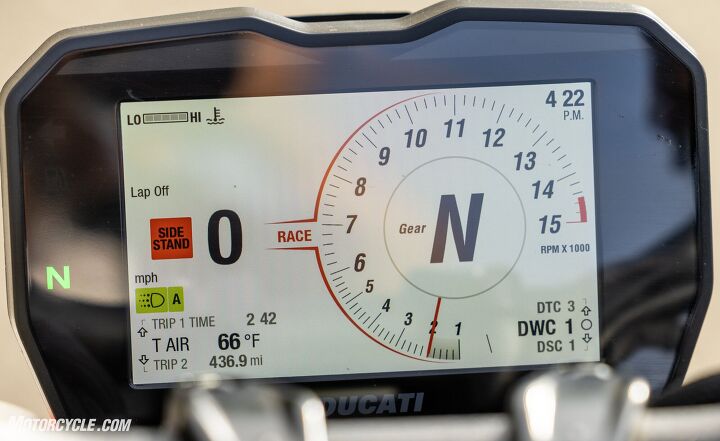
Harnessing all of the engine’s power requires a level of trust on the electronics unlike the other bikes here.
These are points echoed by Shiv, as bullet points like “ballistic missile” and “really easy bike to go unusually fast on” were top on his notes. Like most of us, Shiv was also impressed by how well the Ducati held its line under power and really appreciated how well the Ducati’s brakes brought the party to a halt when needed.
So, why the third-place finish? Ken Hill didn’t find himself nearly as enamored with the Ducati as the rest of us. He was a fan of the Streetfighter’s geometry for the track and was equally impressed by the Brembo brakes. Expanding on Mark’s comments about the heavy-handed engine depending on the electronics, Ken never got on with the Streetfighter’s throttle mapping, noting a dramatic off-throttle lag with the engine braking set in the middle of three settings. This, combined with a fork setting that blew through its stroke too quickly meant he had to focus more brain space than he preferred to get the bike pointed in the right direction before unleashing all that power.

Talk about an easy bike to ride fast. The Ducati Streetfighter V4S is it. Helmet: X-Lite X-803 Ultra Carbon Puro.
With our first day of track testing washed out due to rain, the loss of track time proved especially tragic for the Streetfighter, as more time to fiddle with settings possibly could have rectified Ken’s issues. As it were, Ken’s ranking, placing it tied for sixth place, proved to be the Ducati’s fall from grace. If we remove Ken’s scores from our test then the Ducati would end up the winner here, just as it did during our street test.
| 2021 Ducati Streetfighter V4S | |
| + Highs Mega Motor Mega Chassis Mega Electronics | – Sighs Some may not like being so reliant on electronics You need time to get the most of all the adjustments and settings Time was something Ken (and the rest of us) didn’t have |
Second Place: Triumph Speed Triple 1200 RS
| Reviewer Rankings | ||||
| Evans: 3rd | Troy: 4th | Shiv: 1st | Mark: 3rd | Ken: 1st |
| Objective + Subjective Ranking: 1st | ||||
Talk about a shocker. Nobody saw this one coming. After its poor performance during our street test, we assumed the Triumph would especially fall flat during the track testing – especially after Triumph representatives warned us “It’s a street bike, first and foremost.” The Speed Triple finishing second was, by far, the biggest surprise of this whole test. But once we dive a little deeper, we can start to understand why it shot up the rankings.
For starters, our test bike suffered from a faulty quickshifter during the street portion of our test. While that might not sound like much, it actually accounts for more than you think. The problem turned out to be a broken quickshifter unit itself, but this wasn’t discovered until after the street ride. We were able to get the unit fixed (replaced, actually) in the short window between our street ride and track test, and it played a noticeable role in elevating the Triumph’s standings.
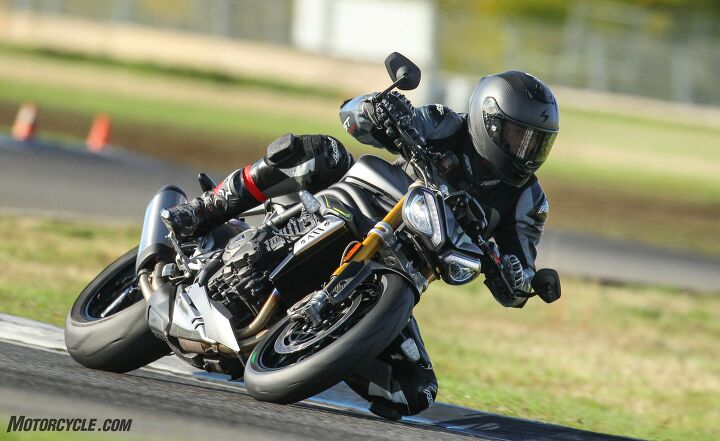
Light. Balanced. Sorted. Triumph got the Speed Triple right and all of us were able to go fast straightaway.
Not having to dedicate extra brain space on shifting means you can focus on riding, and all of the testers made some kind of notation on just how easy the Triumph was to ride quickly on track with minimal acclimation.
“What an easy bike to ride on the track!” says Evans, followed by “deceptively quick.”
Shiv, who never entertained owning a Triumph in the past, ranked the Triumph his top pick in this test, writing how track-focused and “feel-some” the Speed Triple felt. He continues with “Great engine and great throttle mapping. It encourages aggressive throttle application.”

Though the Triumph has the least power in this test, excellent fuel mapping means you can use every one of those horses to the max.
Our TT ace Miller broke it down nicely, stating “[the Triumph] engine might have less peak power than some but has more usable power than most.”
“Right out of the gate I felt most comfortable on the Triumph,” says Ken. “Easy. Easy. Easy.”
This sums it up perfectly. The Speed Triple doesn’t have the most power, nor does it have electronic suspension, but what it does have it uses to the fullest. Each tester came away impressed by how connected they felt their right hand was to the engine. This is a testament to the Triumph’s fuel mapping right from the factory. Its chassis is nicely composed and combined with being the lightest bike here, one can hustle it around the track quicker than others to help make up for the horsepower deficit. In a way, it’s the antithesis of the Ducati – sure the Speed Triple has electronic rider aids, but they act as a last resort instead of a main line of defense.
And that quickshifter? It made a huge difference. “[The] auto-blip downshifting performs better than any other bike in this test,” says Mark. He continues, “I like its full-time static suspension; there’s less fuss, less weight, and less to break over time.” It’s a sentiment the others agree with, too, as the Öhlins bits are easy to adjust and well-damped for track settings. Hill went on to praise the fork’s composure, especially at the bottom of its stroke.
“That suspension I complained about on the street?” says Evans, “It was great on the track, with its manual adjusters offering predictable damping unlike what I occasionally encounter with the active electronics on the other bikes.”

Shiv has owned several motorcycles in his day. A Triumph was never one of them. The Speed Triple 1200 RS might change his mind.
The praise continues for the Triumph’s Brembo Stylema brakes, as everyone loved the power and feel it delivered, bolstered by the adjustable RCS master cylinder that allows instant leverage changes at the flick of a knob.
As we see, no individual component of the Speed Triple is particularly impressive, but as a sum of its parts, the Triumph absolutely impresses with how quickly it can get around a racetrack. It’s a true surprise in this test. Combined with one of the least expensive price tags in this group, when you look at our overall scores combining both subjective and objective points, the Triumph actually comes away the winner.
| 2021 Triumph Speed Triple 1200 RS | |
| + Highs Power delivery incredibly smooth and linear Excellent chassis Surprisingly quick | – Sighs Lacks a bit of top-end Finding neutral is next to impossible Key fobs aren’t for everyone |
First Place: Aprilia Tuono V4 Factory
| Reviewer Rankings | ||||
| Evans: 2nd | Troy: 3rd | Shiv: 3rd | Mark: 1st | Ken: 2nd |
| Objective + Subjective Ranking: 2nd | ||||
If it ain’t broke, don’t fix it. Amirite? Once again, the Aprilia Tuono V4 Factory, one of our favorite platforms for the past decade (and counting) comes through to snatch victory away from the others by the slimmest of margins. As the other contenders all varied wildly among the individual tester’s scores, the Aprilia never fell lower than third place on anyone’s scoring – and crucially it topped Mark’s overall scorecard.
We’ve long passed the point of sounding like a broken record when it comes to the Tuono (and RSV4 for that matter), but the reasons are simple: An intoxicating engine and ultra-precise chassis.
So, where else to start but the engine? The wonderful V4 sounds as devilish as it ever has, and despite the fact there are numerous other engine configurations here, including another V4, none quite match the character – and the sound – of the Aprilia V4. With over a decade’s worth of development on it, it’s no surprise to learn the fuel mapping feels very connected between throttle hand and back tire.
At least that was the impression everyone got except Shiv. Having owned and tuned several Tuonos and RSV4s, he notes the mapping down low in the rpm range isn’t quite as crisp on this Euro5-compliant model as past Tuonos. He blames the feds for that one. Nonetheless, Shiv is picking an extremely small nit and concedes that the fueling is still really quite good and “seamless,” according to Evans. And if you ever start to feel uninspired, all one has to do is whack the throttle open, listen to the V4 at full song, and get reinvigorated.
Of course, a good engine needs a willing dance partner, and the Tuono frame and engine combo have been stepping to the same tune for years. Despite its 471-pound heft (second only to the Kawasaki), which every tester commented on in their notes, the Aprilia hides its weight well and still carves a corner with the best of them – as long as you push the pace. Evans sums it up like so:
“On the track, the Aprilia is the bike that seems the most disappointed in my riding ability. Where the other bikes ribbed me in a good-natured way to go faster, the Tuono scoffs at me. Is that all you’ve got, grandma? You see, the Tuono is happier the more you push it, and it pays dividends to do so. Unfortunately, its track limits are beyond mine. That said, the exhaust note is to die for, and the acceleration matches the sound. The braking is top-notch. Throttle control is seamless. As a mere mortal riding this demanding machine, I can find few flaws beyond my own.”
Brakes are excellent on the Tuono, with both Shiv and Mark praising the Aprilia for its stability while trailbraking. Opinions get a little more separated when talking about electronics. As far as rider aids go, the Tuono gets high marks for its TC, wheelie control, and ABS that hardly intervened (MV take note).
Where it falls short is with the electronic suspension. The pre-selected settings are never quite fast enough to keep up. Littered throughout Ken Hill’s notes are phrases like “Always a few milliseconds behind” and “let down by reaction of suspension settings.” Specifically, the shock. During hard braking, the shock would pitch up quickly before slowing down – when it was too late. The opposite was true after finishing a turn coming off the brakes. There’s an initial dead zone when the shock would squat on acceleration before firming up again.

The Aprilia does it again, coming out on top by a razor-thin margin. Helmet: Arai Corsair X. If you’re wondering why I’m wearing a different helmet in nearly every photo, it’s because our next shootout has already begun.
The cure? Switching to the Tuono’s manual suspension settings. In manual mode, the suspension behaves like analog suspenders, but instead of tuning compression and rebound via clicks, you do it through button presses. “Static suspension settings are best for track days,” says Thriller Miller.
A proper track bike should excite and stimulate the soul after every lap. The Tuono has been doing that for the better part of a decade and doesn’t show any signs of slowing down now. It’s a perennial favorite one more year running.
| 2021 Aprilia Tuono V4 Factory | |
| + Highs What an engine! Confident chassis once you go fast Impressive electronics, too | – Sighs Doesn’t suffer fools gladly Automatic suspension settings aren’t great Heavy |
Crossing The Checkered Flag
As we round the last bend and head towards start/finish for the last time, we’ll take yet another opportunity to pinch ourselves and appreciate what a time it is to be a fan of heavyweight naked bikes. All seven of these bikes are rippers, with capabilities likely 99% of us will never be able to fully exploit.
Inevitably during any test, the cream always rises to the top. In this case, the more we rode them, the more the Ducati, Triumph, and Aprilia continued to impress. How close was it? So close that, out of 600 total points on the MO scorecard, only 5.5 points separated the top three.
We say this all the time, but it really applies this time: all of these bikes are good. Which one is the goodest? By the slimmest of margins – 1.75 points between the top two in our subjective rankings – it’s the Aprilia Tuono V4 Factory.
|
In Gear – Mark
|
|
In Gear – Ken
|
|
In Gear – Shiv
|
|
In Gear – Evans
|
|
In Gear – Troy
|
| Scorecard | Aprilia Tuono V4 Factory | BMW S1000R | Ducati Streetfighter V4 S | Kawasaki Z H2 SE | KTM 1290 Super Duke R | MV Agusta Brutale 1000RR | Triumph Speed Triple RS |
|---|---|---|---|---|---|---|---|
| MSRP | 94.9% | 89.1% | 73.4% | 93.9% | 98.9% | 54.7% | 100% |
| Weight | 87.1% | 90.0% | 100% | 81.8% | 93.1% | 93.1% | 93.1% |
| Pounds/HP | 87.1% | 90.0% | 100% | 81.8% | 93.1% | 93.1% | 93.1% |
| Pounds/Torque | 64.1% | 66.1% | 100% | 67.2% | 85.4% | 64.1% | 67.2% |
| Total Objective Scores | 87.7% | 88.1% | 89.1% | 83.5% | 93.9% | 75.3% | 93.4% |
| Engine | 93.0% | 84.5% | 84.3% | 94.5% | 85.3% | 77.5% | 95.3% |
| Transmission | 91.5% | 84.0% | 89.0% | 86.5% | 77.0% | 73.0% | 94.0% |
| Handling | 89.0% | 78.0% | 88.5% | 70.0% | 82.0% | 83.0% | 93.0% |
| Brakes | 91.0% | 81.5% | 96.0% | 79.0% | 83.0% | 77.0% | 90.0% |
| Suspension | 89.0% | 79.0% | 89.0% | 69.0% | 83.0% | 83.0% | 91.0% |
| Technologies | 92.5% | 82.0% | 91.0% | 83.0% | 83.0% | 77.0% | 87.0% |
| Instruments/Controls | 91.0% | 91.5% | 87.0% | 82.0% | 87.0% | 72.0% | 81.0% |
| Ergonomics | 88.5% | 86.0% | 86.0% | 77.0% | 82.0% | 63.0% | 89.0% |
| Quality | 90.0% | 87.0% | 95.0% | 85.5% | 82.5% | 87.0% | 89.0% |
| Cool Factor | 84.0% | 77.5% | 94.0% | 78.5% | 86.0% | 94.0% | 82.0% |
| Grin Factor | 91.0% | 80.0% | 88.0% | 92.5% | 85.5% | 72.0% | 93.0% |
| Overall Score | 89.6% | 84.3% | 89.3% | 82.9% | 86.2% | 77.3% | 90.9% |

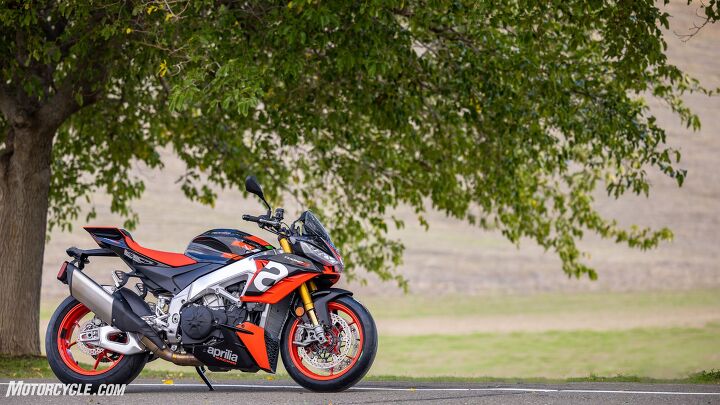




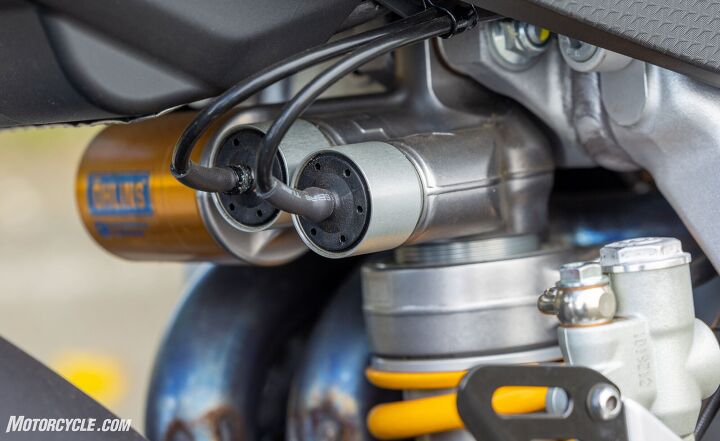
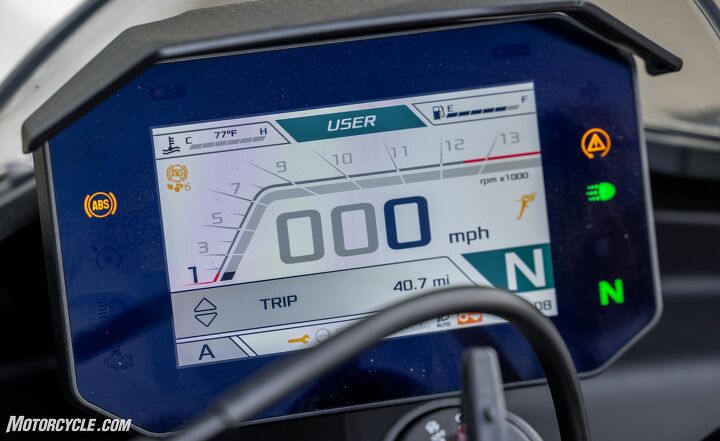

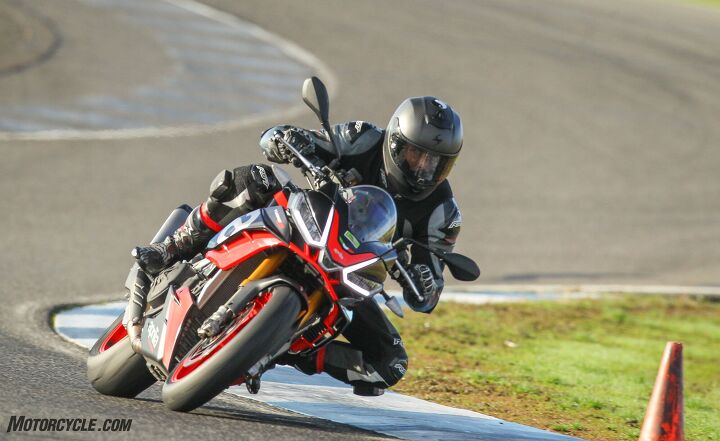




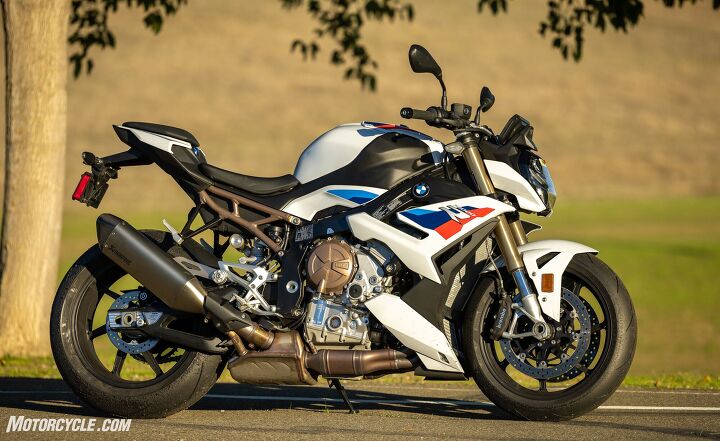

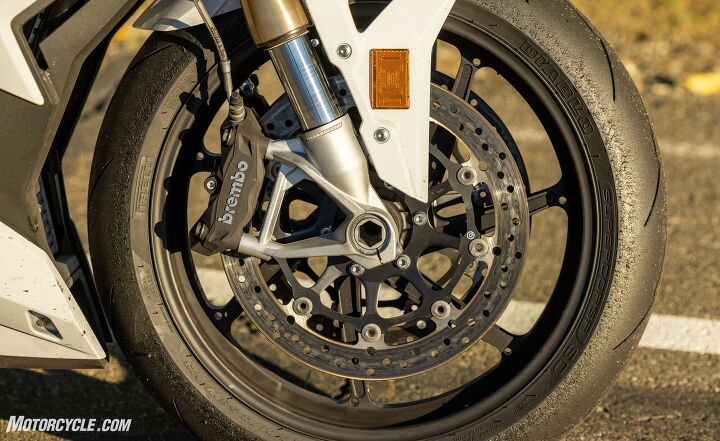
















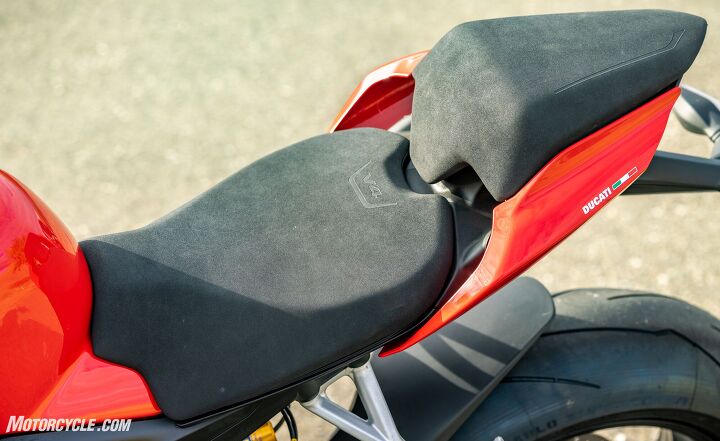

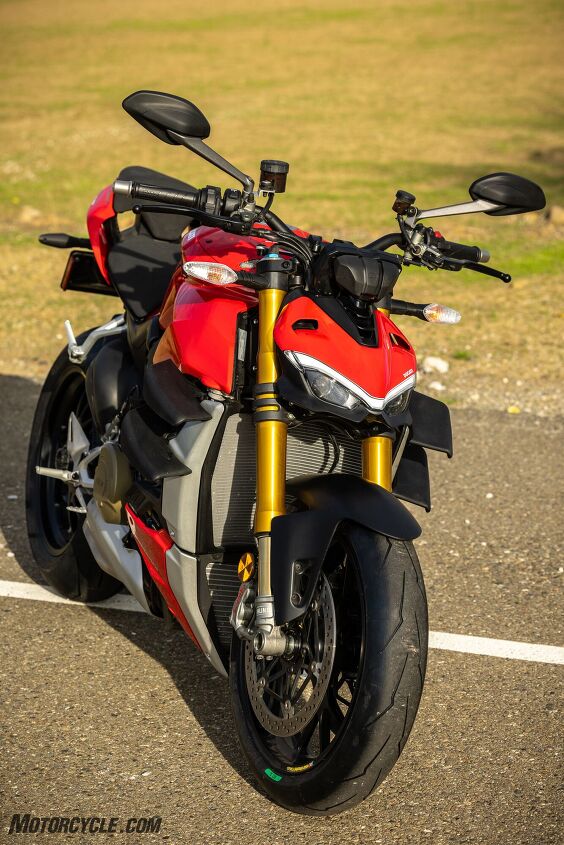

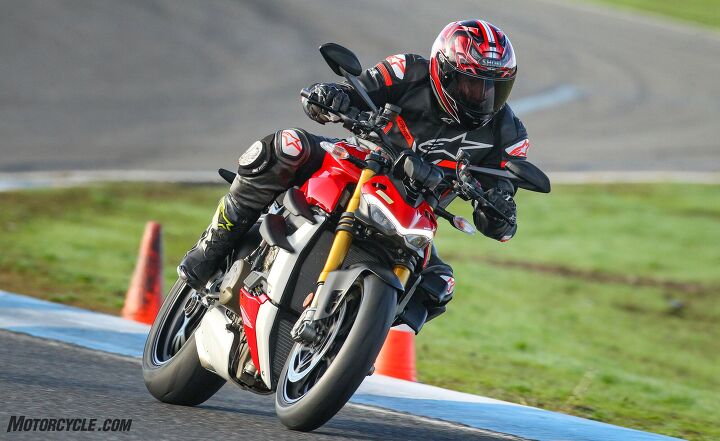
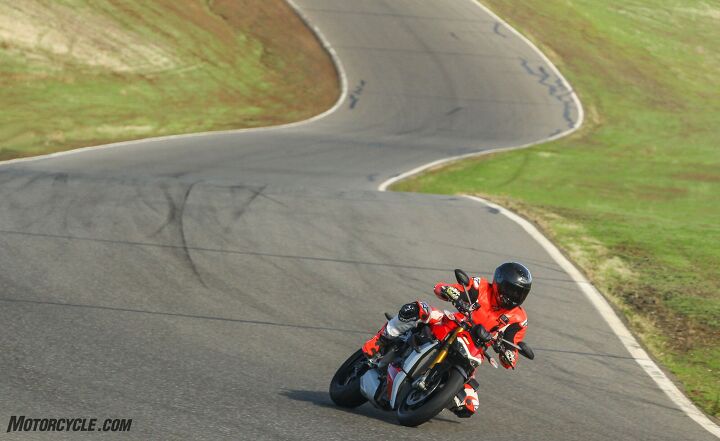

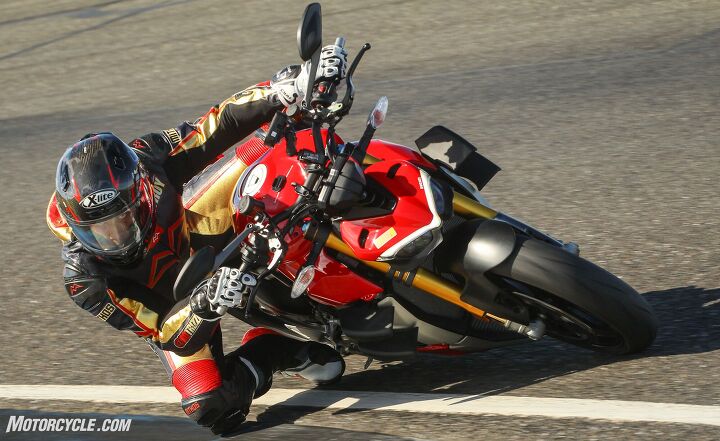
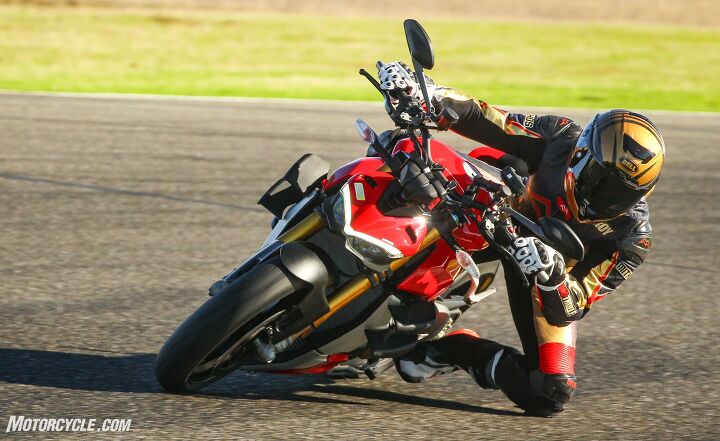


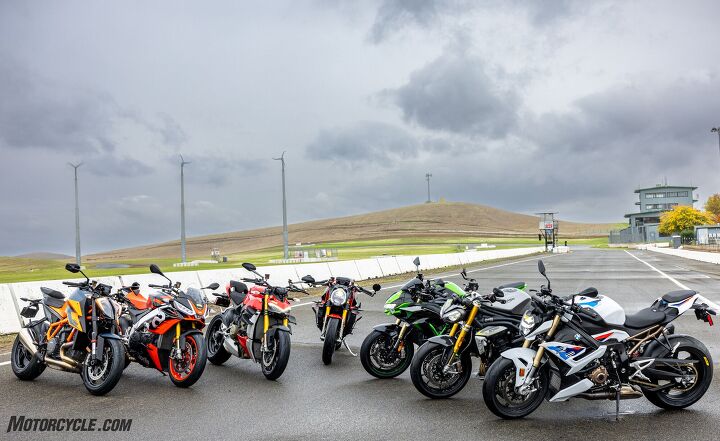










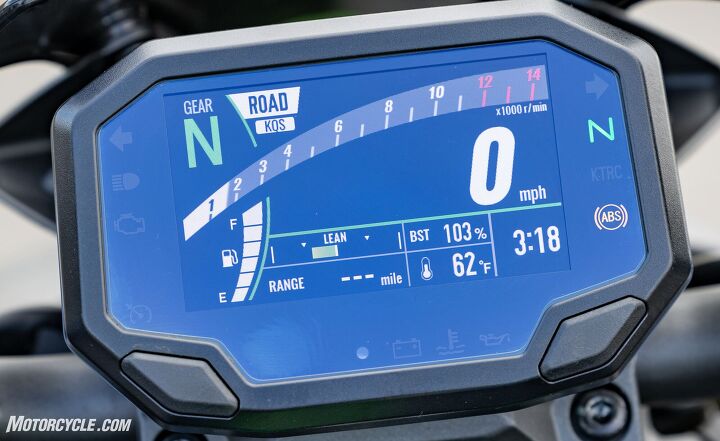









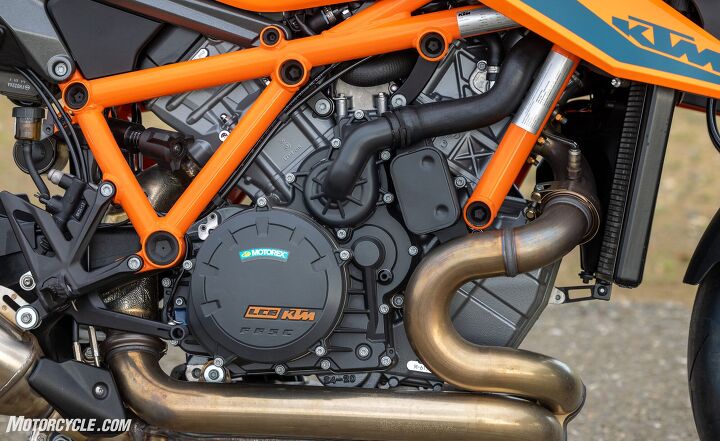




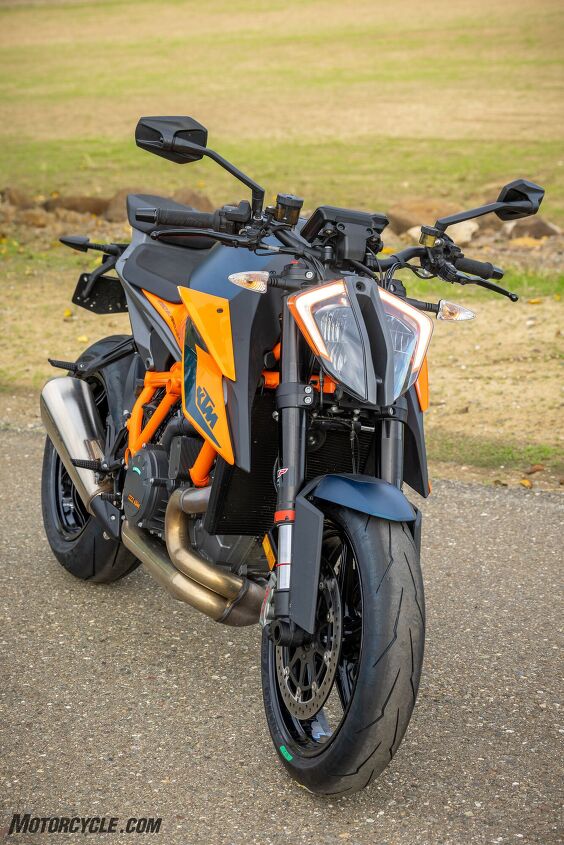


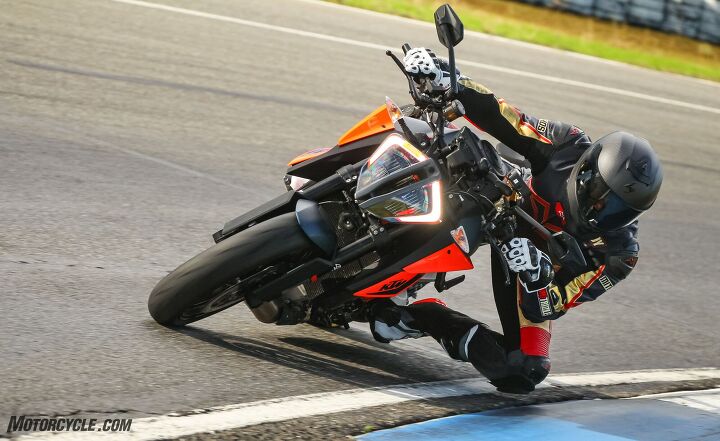




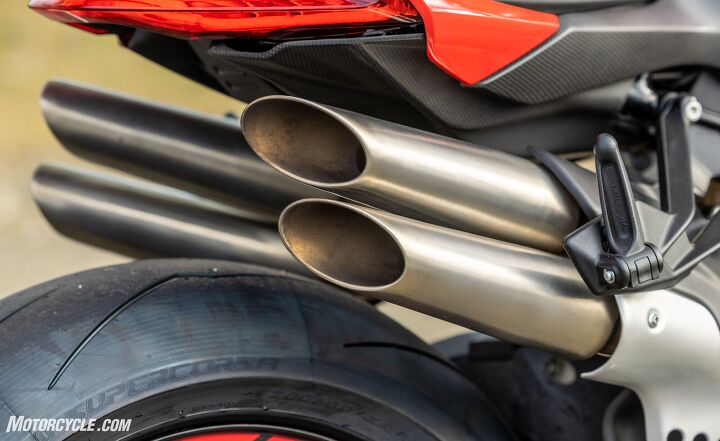



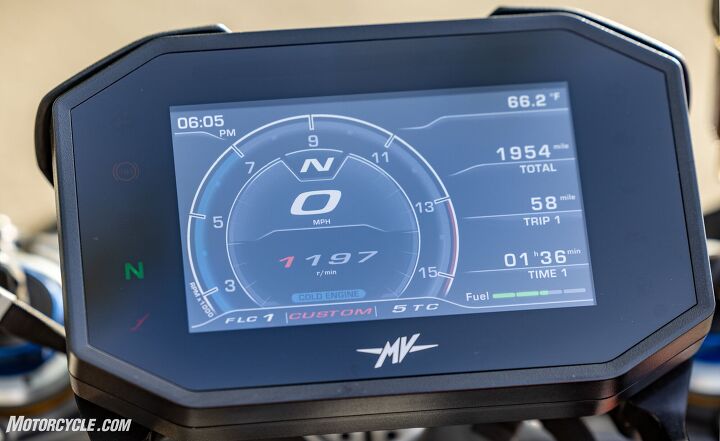


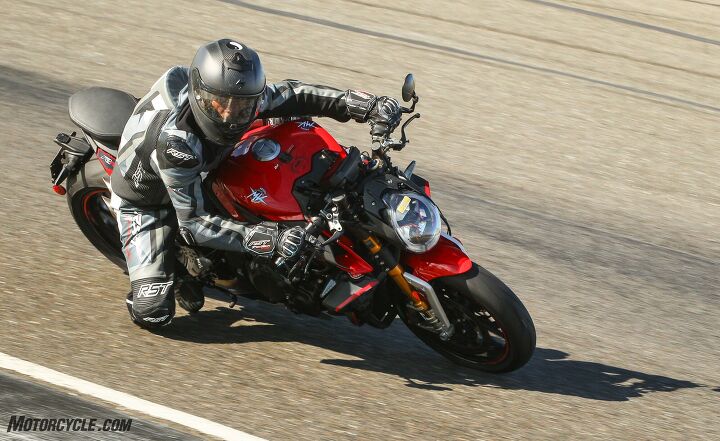

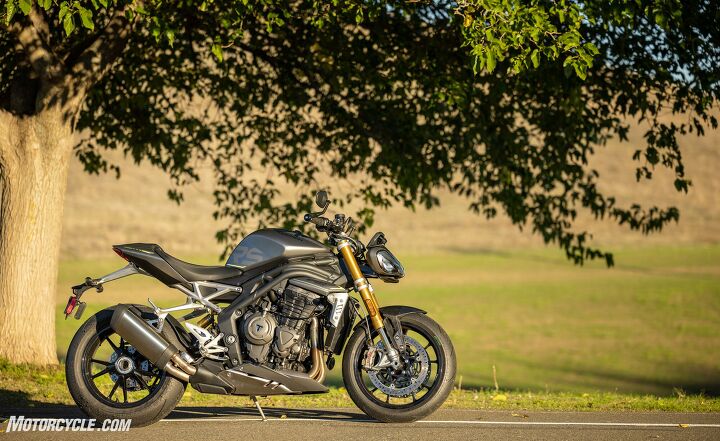

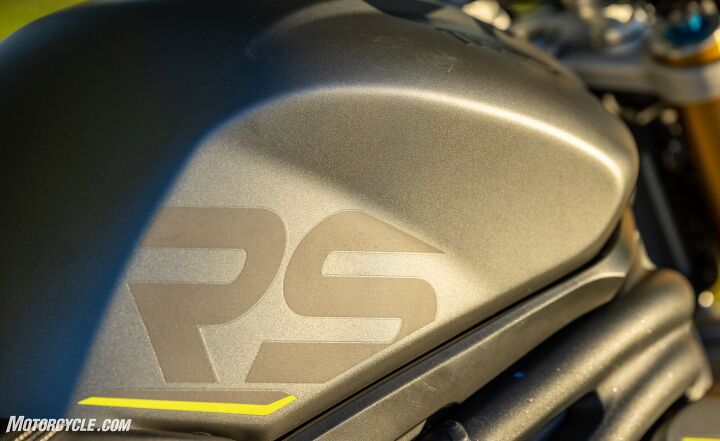


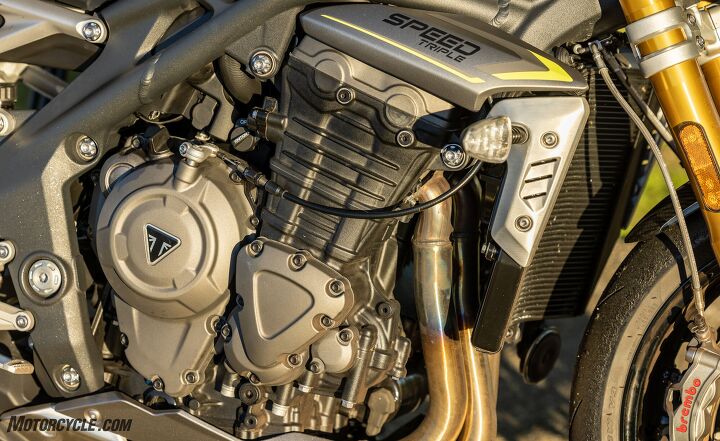



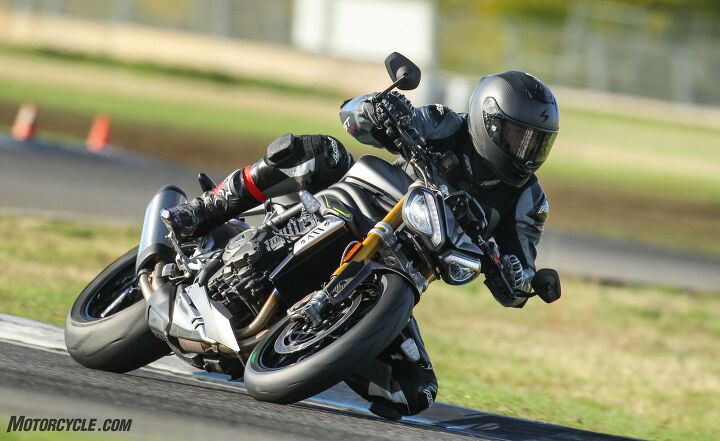



We are committed to finding, researching, and recommending the best products. We earn commissions from purchases you make using the retail links in our product reviews. Learn more about how this works.
Become a Motorcycle.com insider. Get the latest motorcycle news first by subscribing to our newsletter here.
The post Battle Royale: 7-Way Heavyweight Naked Bike Shootout – Track appeared first on Motorcycle.com.
Copyright
© Motorcycle.com








